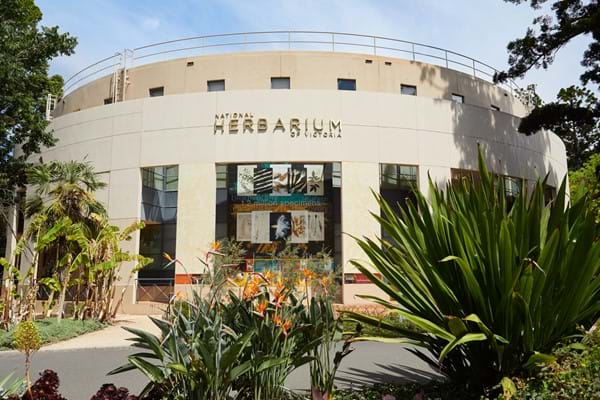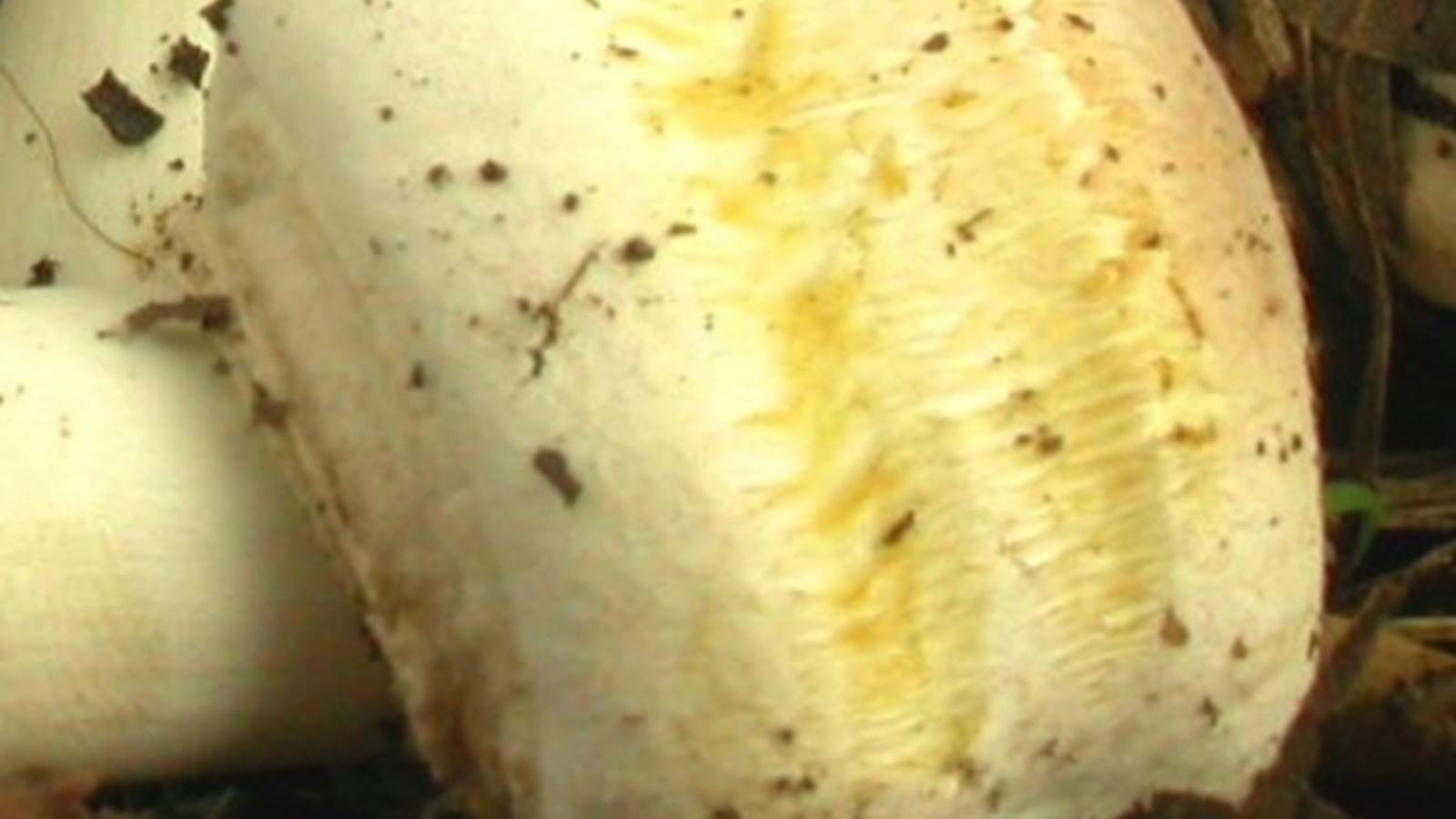
Yellow-staining Mushroom – Agaricus xanthodermus
Jump to:
Yellow-staining Mushroom – Agaricus xanthodermus
The Yellow-staining Mushroom (Agaricus xanthodermus) is the cause of most poisonings due to ingestion of wild fungi in Victoria. This mushroom looks very similar to the Cultivated Mushroom (Agaricus bisporus) and to edible wild mushrooms such as the Field Mushroom (Agaricus campestris). In urban areas the Yellow-staining Mushroom is unfortunately much more common than edible mushrooms. It can grow in large troops in lawns and gardens.
Distinctive characters
- lamellae (gills) pale pink at first, becoming very dark brown at maturity
- annulus (ring) present on the stipe
- pileus (cap) and stipe (stem) surfaces stain bright yellow on bruising or scratching
- yellow stain particularly obvious if the stipe is split in two and the flesh in the stipe base is rubbed
- pileus usually white but can become brown in age, and may become cracked in age
- pileus a little squarer in profile than in other mushrooms, especially in the button stage
- odour unpleasant, like disinfectant
Symptoms and treatment
Symptoms of poisoning by Yellow-Staining Mushroom are nausea, stomach cramps, diarrhoea and vomiting, shortly after eating. Symptoms are caused by the presence of the chemical phenol in the mushroom. The severity of symptoms varies with the amount eaten.
For treatment, contact the Poisons Information Centre (13 1126).
Description
Pileus: 50–200 mm diameter, at first globose or hemispherical (but usually rather square in profile), then convex to plane. Surface white, eventually off-white, but in age the pileus often becomes brown or greyish brown in the centre, and may eventually be entirely brownish. The pileus surface can also become deeply cracked, particularly in warmer weather. Bruising bright yellow.
Lamellae: crowded, free, at first white, then deep flesh pink, eventually brown then dark purplish brown.
Stipe: 50–150 mm long, 10–20 mm diameter, cylindrical, base bulbous. Surface staining yellow. With a definite membranous annulus which is double (with a ridge of tissue on the underside of the annulus).
Flesh: white, bruising yellow on cutting. Even in old specimens, the flesh inside the base of the stipe will bruise yellow (cut stem in half).
Odour: strong chemical odour, of phenol (also has been described as Carbolic or like Indian Ink or iodine).
Spore print: dark purplish brown.
Substrate: on the ground.
Habitat: in clusters or large troops in lawns among grass, or in garden beds among leaf litter. Mostly in urban areas, sometimes in bushland, but then usually in disturbed areas such as around picnic areas or where the understorey has been cleared.
Distribution: SA, Qld, NSW, Vic., Tas. Cosmopolitan.
Time of appearance: usually after heavy rain in late summer and autumn, but can occur throughout the year.

